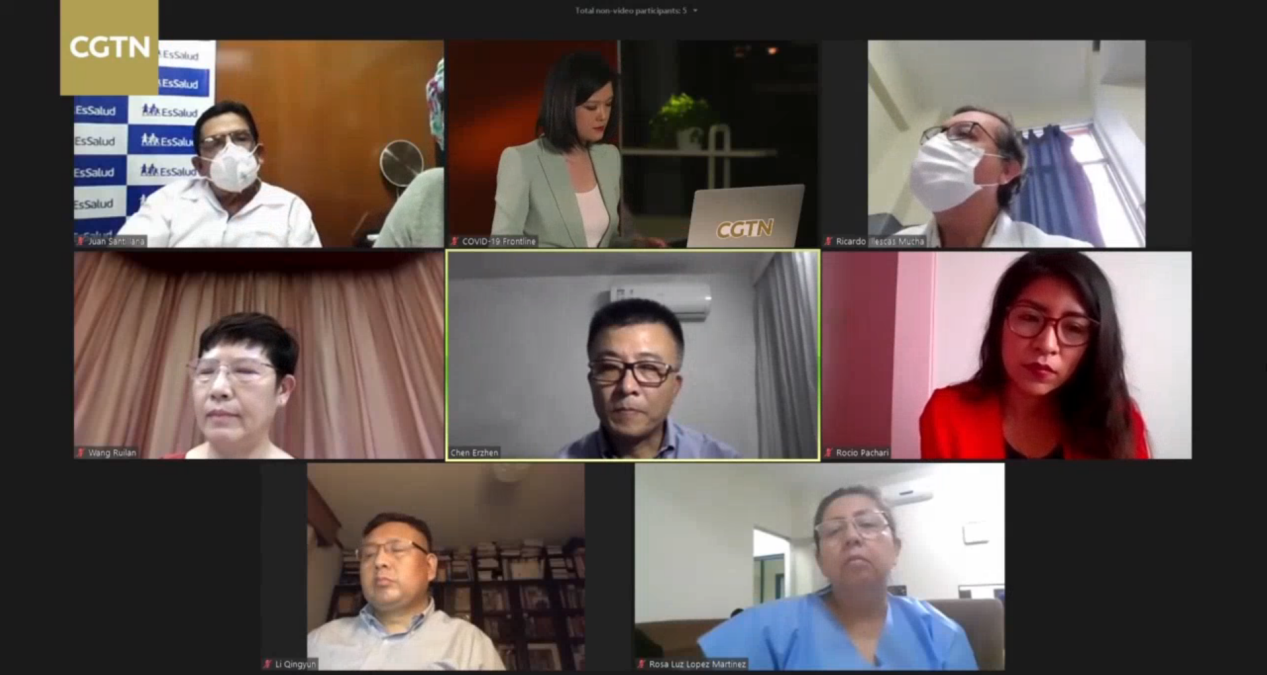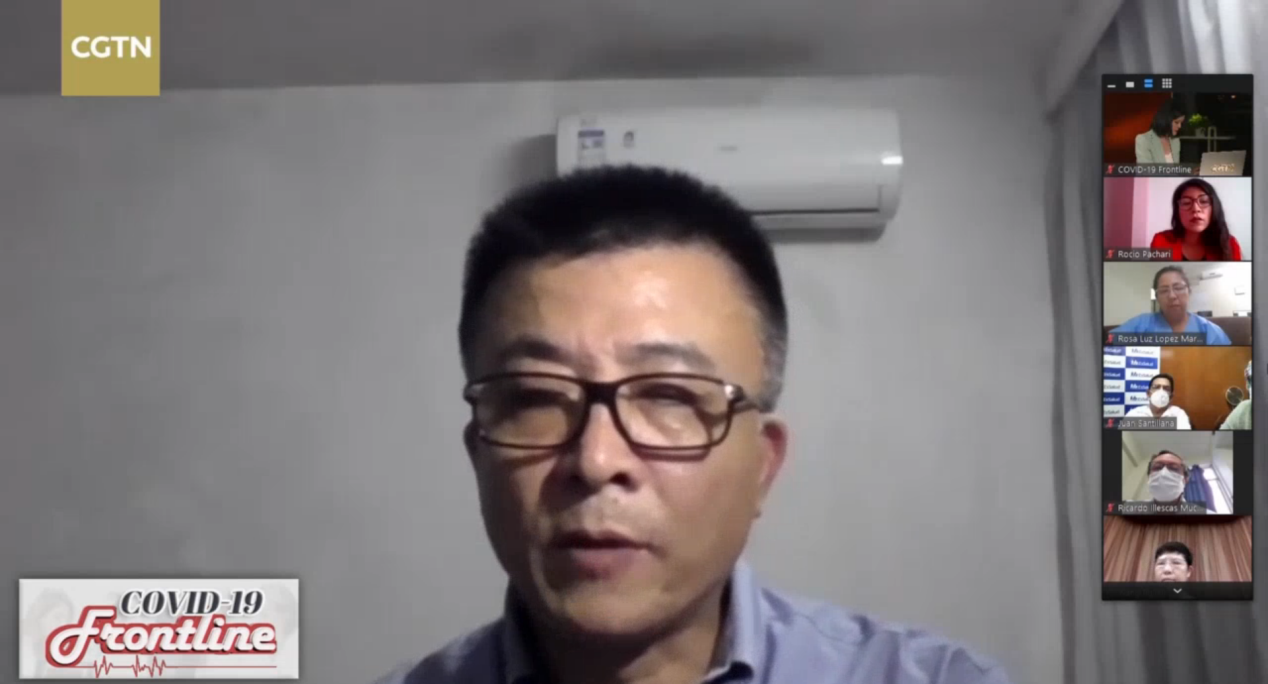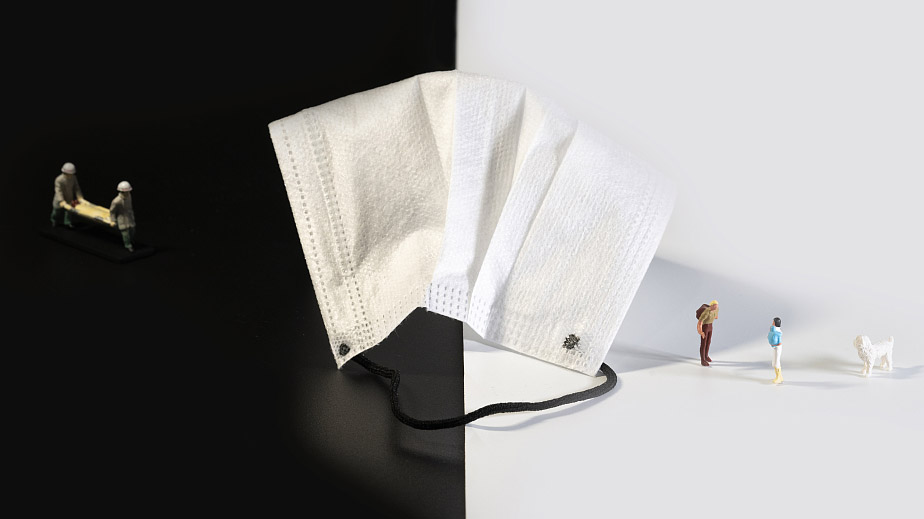Editor's note: On March 12, 2020, the World Health Organization (WHO) declared COVID-19 a pandemic, and as of Thursday ( June 4), about 200 countries and regions have confirmed over 6,287,000 cases, according to the WHO. On CGTN's live program "COVID-19 Frontline," we invited medical workers and experts from China and other parts of the world to share their experiences and take questions from social media, in the hope of providing more information for those who are battling against the pandemic.
In the latest episode of CGTN's livestream program "COVID-19 Frontline" held on Wednesday, June 3, CGTN invited medics from Shanghai who had served on the front line of the fight against COVID-19 in Wuhan, to share their treatment experience with counterparts in Peru.
Live: Chinese medics share COVID-19 treatment experience with Peruvian counterparts
Peru has the second highest number of COVID-19 cases in South America after Brazil. The country recently reported 8,000 new cases of COVID-19 on a single day, taking the nationwide infection case tally to over 170,000, according to WHO.

Chinese medics share COVID-19 treatment experience with Peruvian counterparts via a video conference. /CGTN
Chinese medics share COVID-19 treatment experience with Peruvian counterparts via a video conference. /CGTN
How can hospitals better prepare for the pandemic?
Rosa Luz Lopez Martinez, head of the Medicine Department, Hospital Guillermo Almenara, said in Peru there is no COVID-19 designated hospital, but they built a new ICU to relocate COVID-19 patients, so she wanted to know if there were suggestions about patient management.
Chen Erzhen, vice president of Ruijin Hospital Affiliated to Shanghai Jiaotong University Medical College, said they went through a similar situation in Wuhan during the early stages of the epidemic. After all, the number of designated hospitals for infectious diseases is limited. Therefore, Wuhan temporarily changed general hospitals into designated ones for COVID-19 patients. The most critical issue is how to reconstruct the procedures to prevent and control the infectious disease.

Chen Erzhen, vice president of Ruijin Hospital Affiliated to Shanghai Jiaotong University Medical College, shares his experience in treating COVID-19 patients, via a video conference. /CGTN
Chen Erzhen, vice president of Ruijin Hospital Affiliated to Shanghai Jiaotong University Medical College, shares his experience in treating COVID-19 patients, via a video conference. /CGTN
"The most critical point is to classify patients with COVID-19 into mild, moderate, severe and critical types. The designated hospitals are mainly for the treatment of severe and critically ill patients. For patients with mild symptoms, they should be encouraged to go to the temporary hospital for treatment. As long as these patients are properly treated and do not have serious complications, the risk of transmission from these patients can be effectively controlled," Dr Chen said.
In addition to equipment, a large number of doctors and nurses specializing in intensive care is also needed. There were nearly 18,000 critically ill patients in Wuhan and a total of 19,000 ICU professionals were dispatched from across China to support Wuhan. More than 15,600 patients have survived after the treatment, with a cure rate up to 84.9 percent. So when the medical resources are scarce, support from other parts of the country is needed, according to Chen.
03:06

Medication and use of hormones
Martinez mentioned the use of Tocilizumab and glucocorticoids as well as other drugs in Peruvian hospitals when treating the patients with cytokine storm. She would like to know how Chinese doctors' medication and the use of hormones.
Li Qingyun, deputy director of Respiratory Department, Ruijin Hospital Affiliated to Shanghai Jiaotong University Medical College, said the most important thing is to prevent the disease from deteriorating. There are indicators during treatment, including progressive decline of lymphocyte, the continuous increase of peripheral blood inflammatory factors, such as interleukin6 and C-reactive protein, increased level of lactic acid and rapid progression of pulmonary diseases shown on CT scan.
Li also introduced the antiviral and anti-inflammatory cytokine storm drugs recommended to use in China, such as arbidol, lopinavir, ritonavir and chloroquine. He mentioned that according to the official guideline, no more than three combined drugs should be used in order to avoid side effects. Besides, high doses or long-term use of hormones are not recommended.

A CGTN live stream program "COVID-19 Frontline" is held on June 3, 2020. /CGTN
A CGTN live stream program "COVID-19 Frontline" is held on June 3, 2020. /CGTN
The use of negative pressure space in hospitals
Ricardo Illescas Mucha, head of the Medicine Department, Hospital Guillermo Almenara in Peru, said his hospital has limited number of CT equipment. He wanted to know the cleaning procedure for CT rooms and the use of negative pressure rooms in Chinese hospitals.
Chen Erzhen said whether negative pressure can effectively prevent nosocomial infection remain a controversial issue. It is not necessary to use negative pressure in the CT room, but to avoid cross-infection among patients during the examination, the equipment should be wiped with disinfectants after each use.
How to prevent nosocomial infections?
Juan Alberto Santillana Callirgos, head of the Health Insurance Department, Hospital EsSalud Edgardo Rebagliati Martins in Peru, asked about what should be done to prevent nosocomial infections.
Wang Ruilan, director of Critical Care Medicine, Shanghai General Hospital, said all medical staff must be trained and pass an examination before entering the infectious diseases ward. Even in the clean area, masks and disinfection equipment are essential. Besides, confirmed patients are sent to designated hospitals for treatment. At the same time, hospitals minimize family visits to COVID-19 patients in order to prevent the spread of the virus.
04:08

In later episodes of "COVID-19 Frontline," more frontline doctors and experts from Wuhan will join in to share their experience with their colleagues from other parts of the world. If you have any questions regarding COVID-19, you can share with us using #MyOpinionOnCOVID19 on Facebook.
Videos by Zeng Hongen
Cover image by Du Chenxin